Why replace the knee joint?
CRUCIATE LIGAMENT RECONSTRUCTION
YOUR CARE PATH
This is a resumé of your care path. You can find an extended, interactive version - including notifications - in the AZ Alma app, available for download for your smartphone or tablet in the Apple App Store (iPhone & iPad) or the Google Play Store (Android).

Before surgery

14 days before treatment
Pre-Operative Consultation
After your first appointment with dr. Van den Wyngaert, you may attend the POC, where AZ Alma's nurses help you with all necessary documents. If this is not possible, please make another appointment via phone (+32 (0)9 310 06 43, available weekdays 8:30-18:30) or via e-mail (preoperatieveconsultatie@azalma.be).

6 days before treatment
Health status
If there are any changes in your medical condition or use of medication after your visit to the anaesthesiologist or surgeon, you should contact the hospital. This could mean that your operation should be postponed. The same applies if you have wounds or pimples around the surgical area or develop a cold, cough or fever during the last days before the operation.

1 day before treatment
Phone call
One day before your surgery you will receive a call from AZ Alma. You will be told when you need to be present and at what time the operation will take place. If there are any changes in your use of medication, allergies or health status, pass it on. If you do not hear from the hospital, it is best to contact them yourself.

14 days before treatment
Quit smoking
Non-smokers recover faster and have a smaller chance of complications. Dr. Van den Wyngaert strongly advises you to quit smoking before your surgery.

2 days before treatment
Bring to the hospital
-
Home medication (pills and syringes) in their original packaging. Discuss with your doctor how you should take them the day before and of the operation.
-
Laptop or smartphone is allowed. Wireless internet is available throughout the hospital.

Day of treatment
Shower
To reduce the risk of inflammation, please make sure your skin is clean. Do not use oily soap in the shower and no body lotion or oily cream after showering. Wash and rinse thoroughly on the day of treatment, but only with regular soap and water.

7 days before treatment
Arrange contact & transport
Please arrange a contact person who is available during your time at the hospital and who can take you home - you cannot drive yourself on the day of the operation. Bring his or her contact details on the day of your treatment. It is best to choose someone who can assist you at home during the first 24 hours after your discharge from hospital.

2 days before treatment
Do NOT bring
-
Jewellery, wallet and other valuables
-
Leave accessories like artificial nails, piercings, (ear)rings etc. at home
-
Remove false teeth, glasses or contact lenses before surgery
-
Don't remove your hearing aid; this makes for easier communication

Day of treatment
Fasting
You cannot eat, drink or smoke within six hours before surgery. Until two hours before admission, you may only drink water, apple juice, tea and coffee without milk and sugar. An exception to this rule is any necessary home medication, which you may take with a sip of water. When in doubt, consult your GP.
In hospital
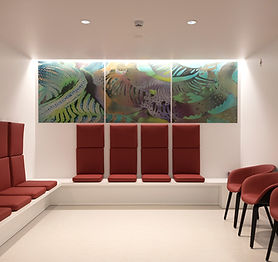
Day of treatment
Arrival
You register at the reception desk, where you will be referred to the Day Hospitalization department. There you will be assigned a room. You will also receive a wristband with your name and date of birth. Please wear this during your stay. After you have changed your clothes, you can proceed to the surgery ward.

Day of treatment
Recovery
After the operation you will be taken to the recovery room, where nurses keep an eye on your comfort after waking. Keep in mind that you may feel drowsy and occasionally fall asleep again. If you have received spinal anesthesia (rachi), it can take up to an hour for the feeling to come back. You will be given analgesic medication; if necessary, you can request extra pain relief.

Day of treatment
Discharge
Patients are typically discharged just a few hours after the procedure. In some cases, the patient is asked to stay at the hospital an extra day. It is normal to feel a little bit under the weather after an operation. You must allow your body the time it needs to recover at its own pace.

Day of treatment
Anesthesia
The anaesthesiologist administers the appropriate anesthetics before your surgery. During the procedure, he monitors your vital functions such as breathing, (un)consciousness and/or pain and adjusts the anesthetics if necessary. The method used can differ per patient, depending on age, physical condition and type of surgery.

Day of treatment
Nursing ward
As soon as you're stable, you will be taken to the nursing ward. Here you can request food and drinks. The nurses will also give you medication and advice.
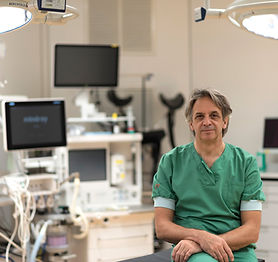
Day of treatment
Surgery
Dr. Van den Wyngaert leads the operation, which typically takes about 30 minutes. Click here for more information about reconstruction of the anterior cruciate ligaments.
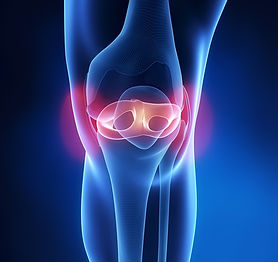
Day of treatment
Results
The ACL reconstruction is a safe and reliable procedure with a high success rate. The rate of recovery depends on your age, the quality of your knee cartilage and how closely you follow our advice. In exceptional cases, a second operation is required to remove excessive scar tissue.
Home again
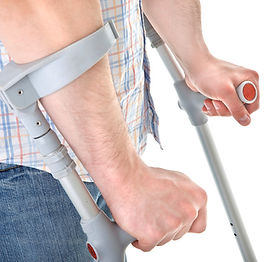
1 day after treatment
Bewegingsadvies
-
Avoid turning abruptly and rotating the knee joint during the first 6 months.
-
When standing, you can fully load the leg, but don't forget to wear your knee brace.
-
Walk with crutches for at least 2 weeks. After a week you can try with one crutch.
-
Avoid overstretching the knee.
-
Reduce activity in case of swelling.

1 day after treatment
Blood thinners
You should start using antithrombin shots six hours after surgery in order to prevent thrombosis. You will receive a prescription for Clexane 40 mg. The shots should be used at the same time every day for 10 days. You may inject them yourself or have them administered by a home nurse - ask for a prescription at the nursing ward.
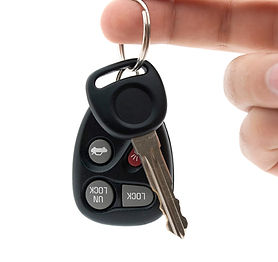
1 day after treatment
Work & activity
When you can return to your job depends on the type of work you do and Dr. Van den Wyngaert's and your physiotherapist's rehabilitation advice. Four days after surgery, you can start practicing on an exercise bike. Driving is allowed as soon as you can walk without crutches. If your knee shows signs of swelling, reduce your activities.

1 day after treatment
Knee brace
After surgery, you will receive a prescription for a large POKO brace (Post Operative Knee Orthosis) and a smaller standard brace. It is important that you use them. Wear the POKO brace during the first 3 weeks after surgery when you put load on the knee (not at night). Also use your crutches. You should wear the lighter brace the following three months.

1 day after treatment
Wound care
-
If the wound is healing without problems, it is best to leave the bandage in place.
-
Three days after surgery, you may shower again. If the wound or the area around it gets wet, carefully pat it dry. Do not wipe!
-
After 10 days you can bathe again, provided that the wound is dry and the stitches removed.

1 day after treatment
Physiotherapy
When you are discharged from hospital, you receive a physiotherapy prescription. The physiotherapist will help you with exercises and movement advice. In Belgium you are entitled to 60 sessions. Aim for one session per day for the first three weeks. After that, if all goes smoothly, reduce frequency to three times a week. After three months, physiotherapy is usually no longer required.
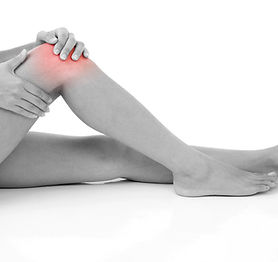
1 day after treatment
Possible types of pain
-
Shin: Caused by irritation of the bone membrane due to bruising. Keep the lower leg horizontal and bandage it when using the toilet.
-
Thigh: Bruising on the inside of the thigh caused by removal of the hamstring.
-
Tingling: Front of the tibia, caused by a squeezed or cut skin nerve.
Rehabilitation phase 1
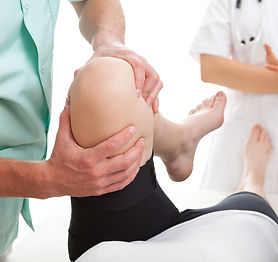
Starting from 1 day after treatment
What happens in this phase
The physiotherapist helps to make your knee more supple. He stretches and bends the joint and gives you exercises to do at home. He also helps you train your anterior thigh muscles (quadriceps), initially by simply contracting the muscles. Gradually these exercises are extended to stretching and bending the knee with resistance.

14 days after treatment
Phase 2 conditions
-
The muscle groups work well together.
-
The wounds have healed.
-
Only minimal swelling.
-
The kneecap has normal mobility.
-
The leg can be fully stretched and bent to about 120-130 degrees.
-
You can walk well without crutches.
-
All exercises are performed without problems.

Starting from 1 day after treatment
Exercises
For the first four weeks, you must perform quadriceps exercises in closed chain, i.e. with foot support. The knee may move between an angle of 0 and 60 degrees. You also start training the hamstrings, calf muscles and gluteals. During balancing exercises, make sure your knee keeps pointing forward and your thigh doesn't rotate.

14 days after treatment
Check-up
Two weeks after your surgery, you have an appointment with the physiotherapist. During this check-up the stitches are removed.
Rehabilitation phase 2
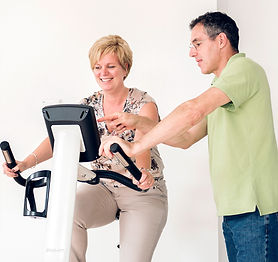
Starting from 3 weeks after treatment
What happens in this phase
The training of upper leg, calf and gluteal muscles is increased. If your physiotherapist approves, you may exercise in open chain (without foot support) and gradually increase the bending angle. You can start cycling outdoors, work on conditioning on a crosstrainer or rowing machine and start jogging from week 10 onwards. You move on to advanced balancing exercises and jumping.

6 weeks after treatment
Check-up
Six to eight weeks after the operation you have an appointment with the physiotherapist.

26 weeks after treatment
Phase 3 conditions
-
Thigh muscle strength in your operated leg must be at least 80% of the strength on the other side.
-
In jump tests (e.g. jumping as high or as far as possible) the operated leg should perform at least 80% as well as the non-operated leg.
-
All exercises must be performed without problems.
Rehabilitation phase 3
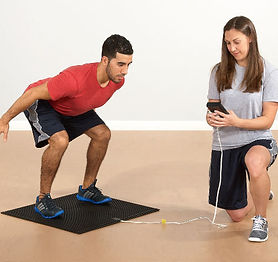
Starting from 26 weeks after treatment
What happens in this phase
Sports specific muscle exercises are intensified. You resume training at your sports club. At the end of your rehabilitation, the physiotherapist performs a number of tests: the operated leg must be at least 90% as strong as the non-operated side. He also evaluates the quality of movement (e.g. by recording a jump test) and reports his findings to Dr. Van den Wyngaert.

6 months after treatment
Check-up
Six months after your surgery, you have an appointment with your physiotherapist.
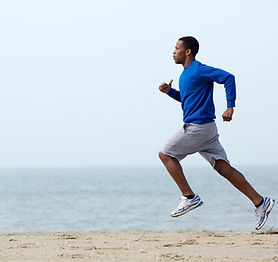
9 months after treatment
Sports
Generally, patients can resume their sports activities about 9 months after surgery. This depends on the kind of sport, any abnormalities found in the cartilage during surgery and your rate of progress during rehabilitation. Discuss with both Dr. Van den Wyngaert and your physiotherapist when it is safe to start exercizing again.
Orthopedic surgeon - specialized in the treatment of knee injuries